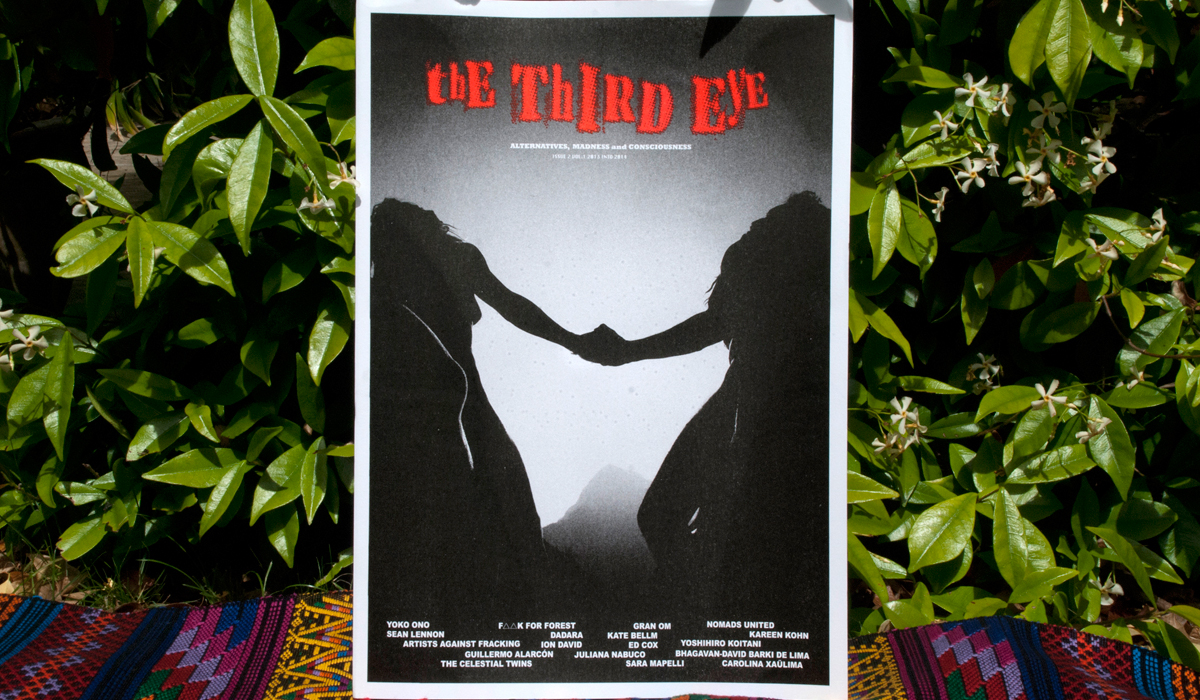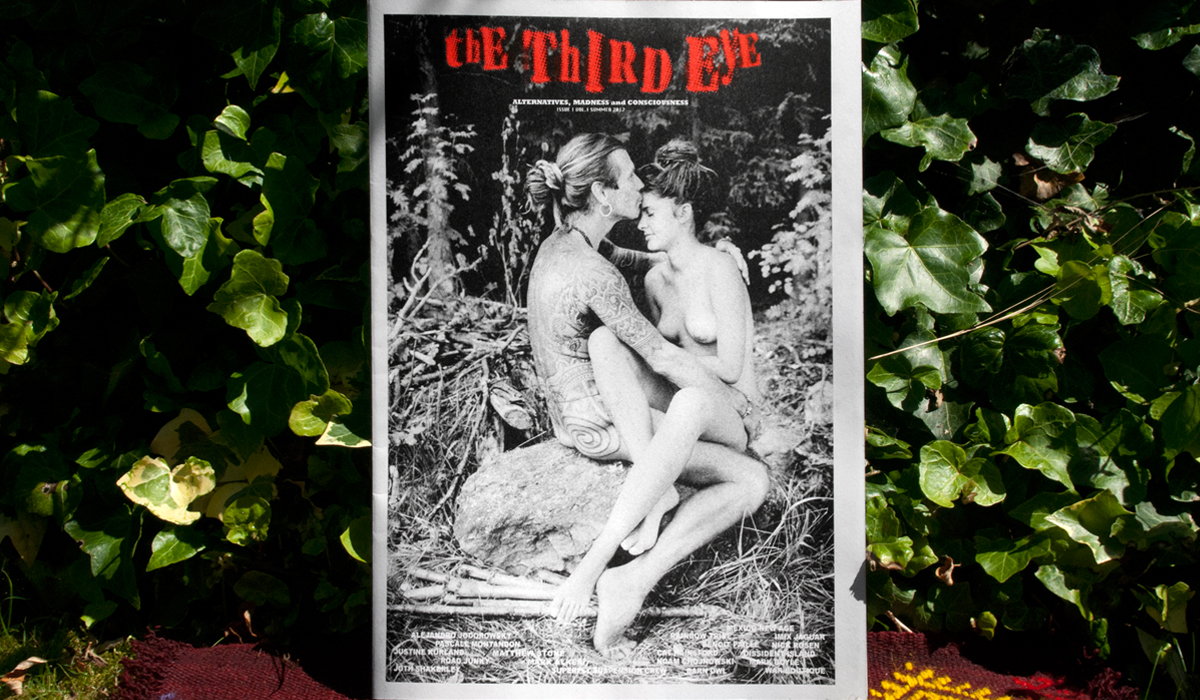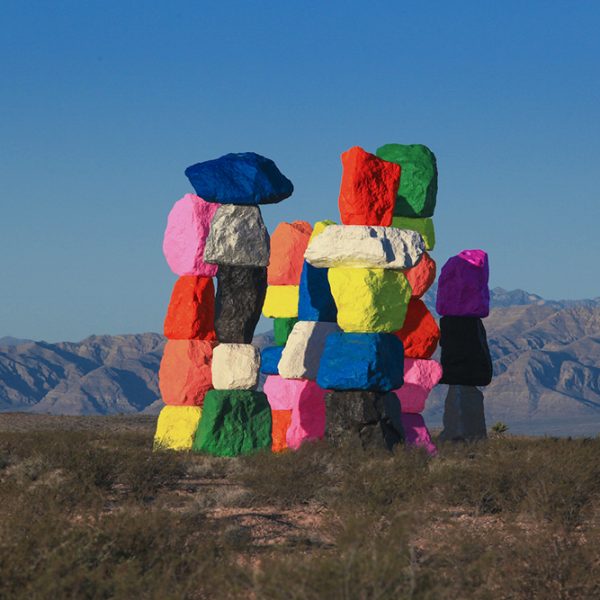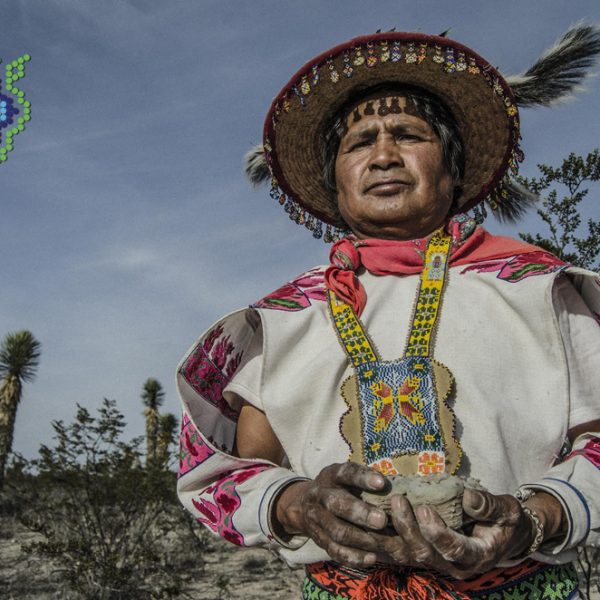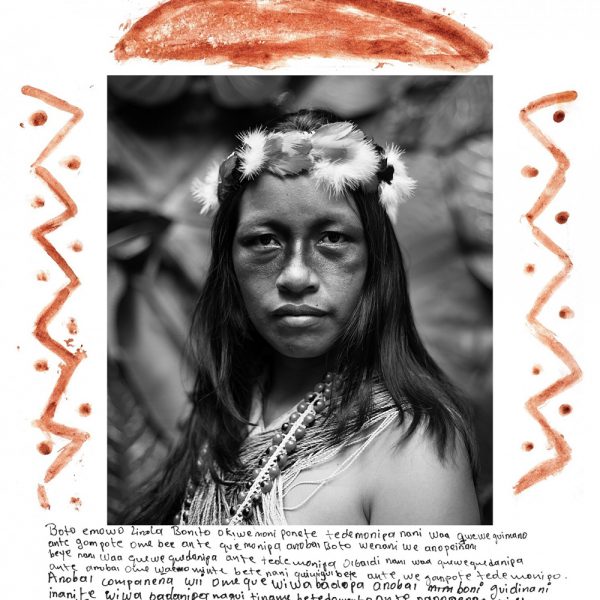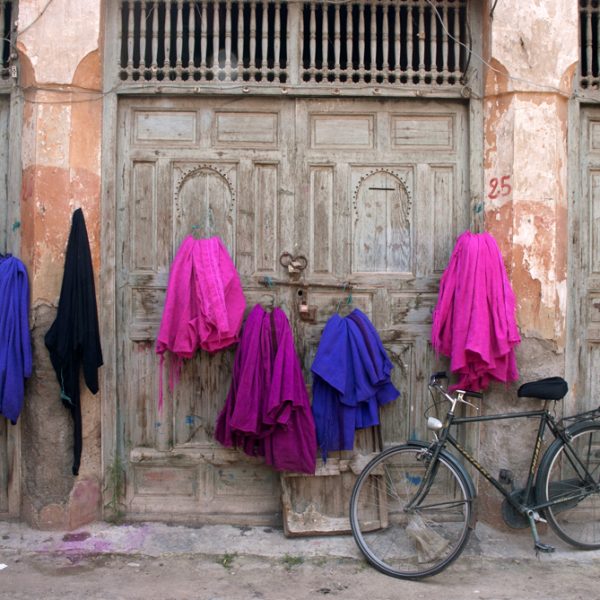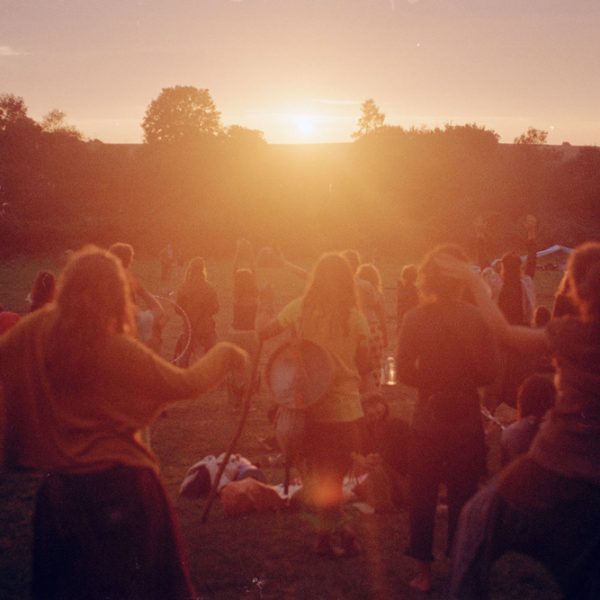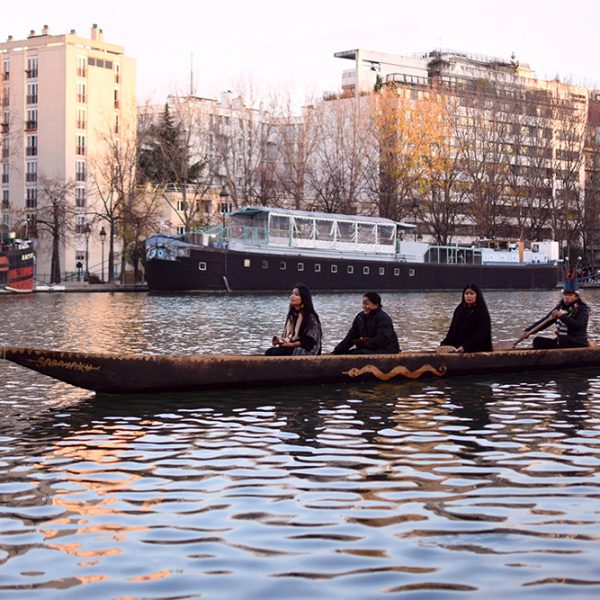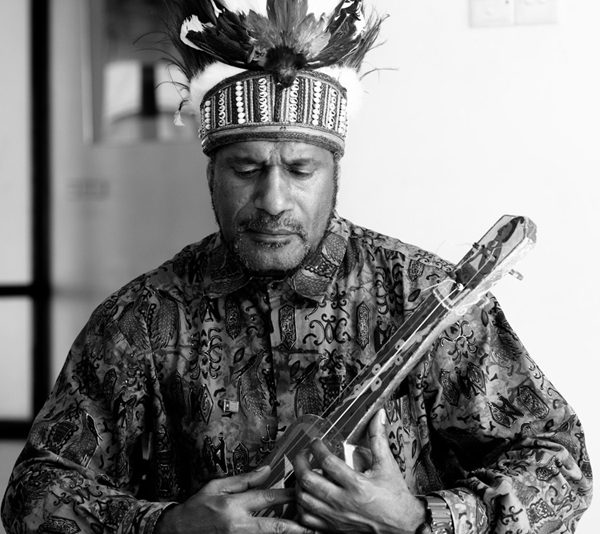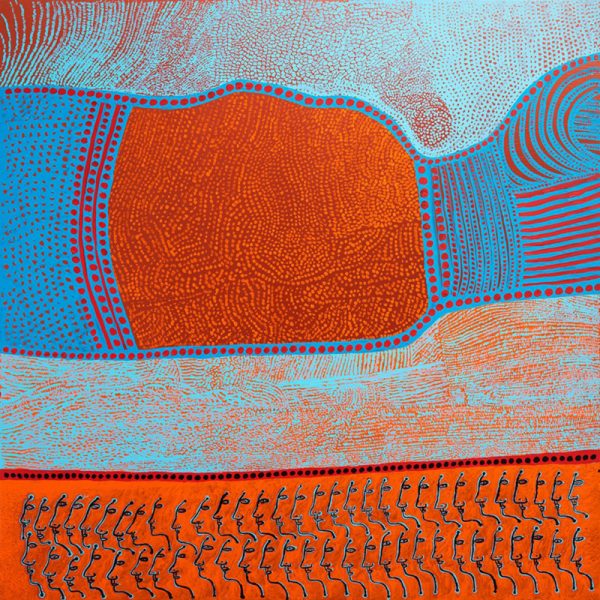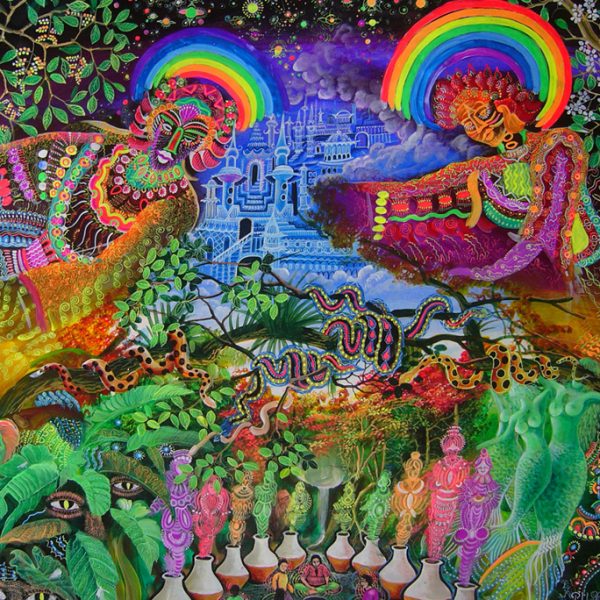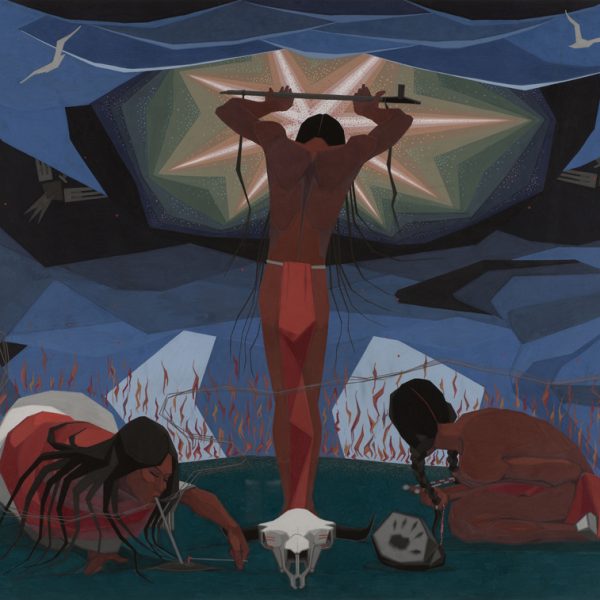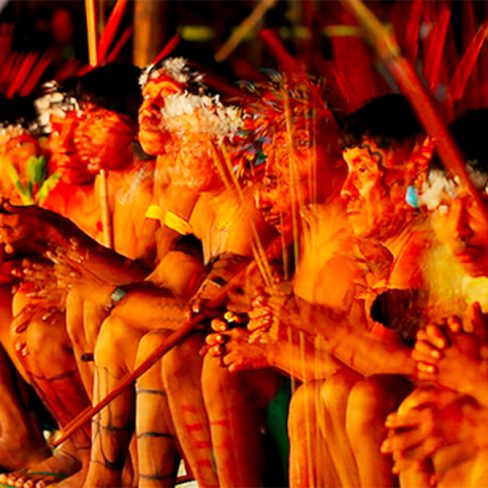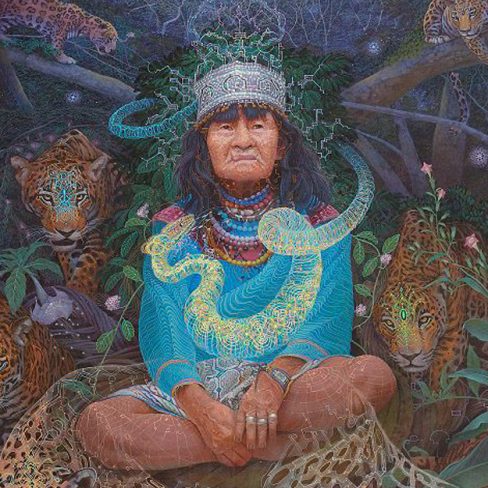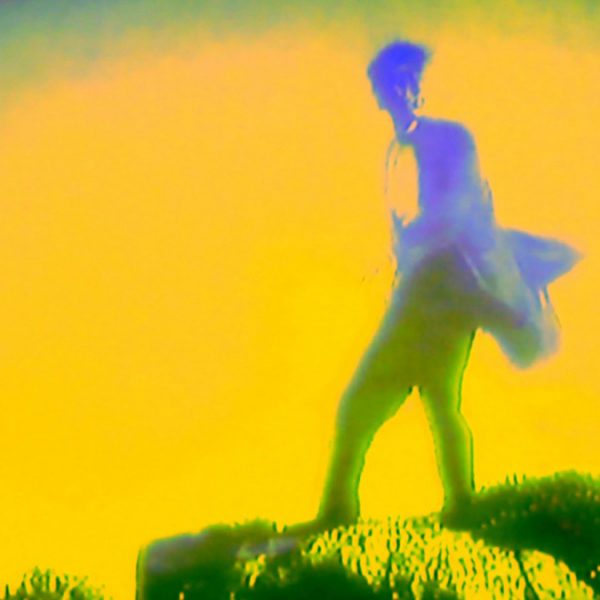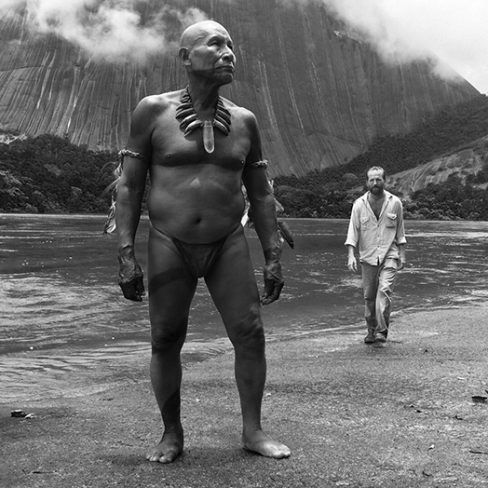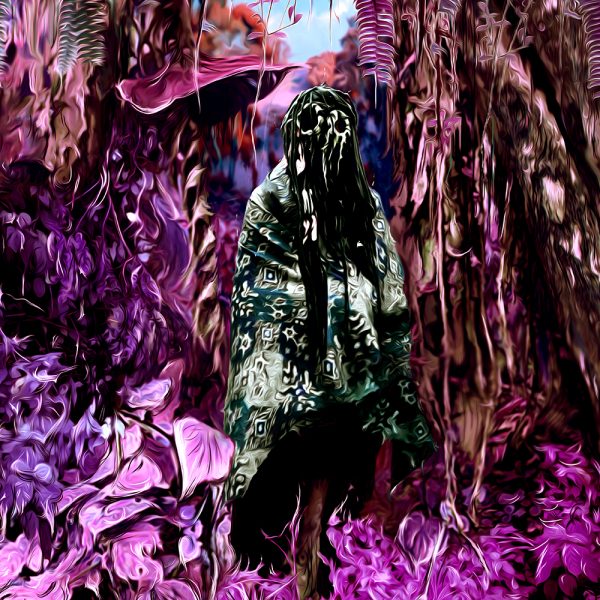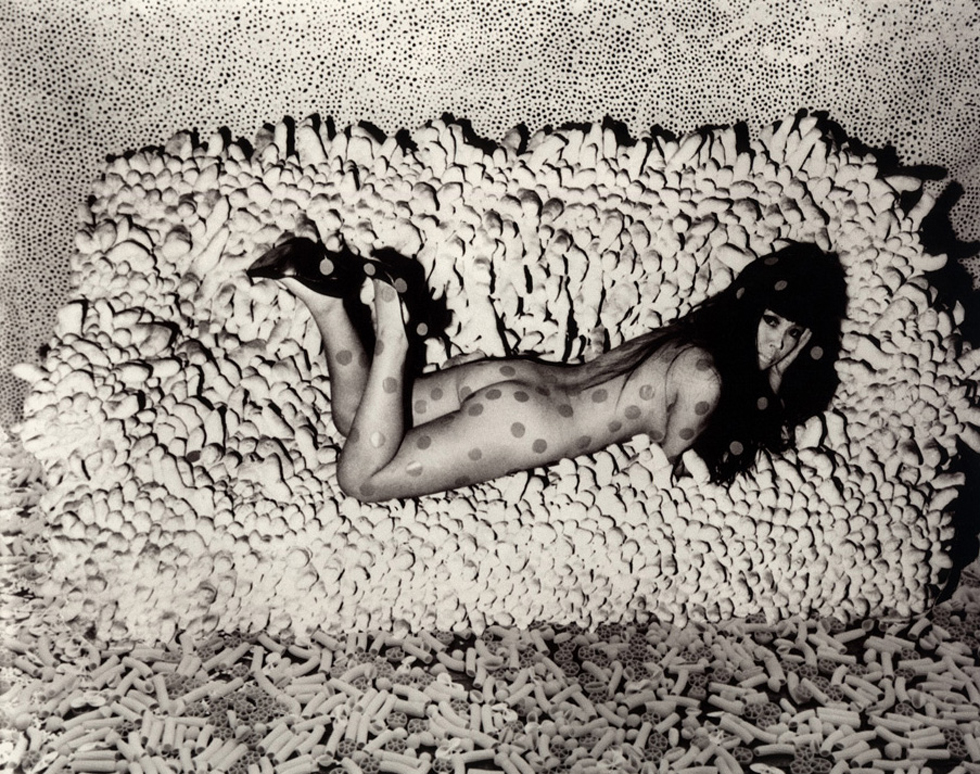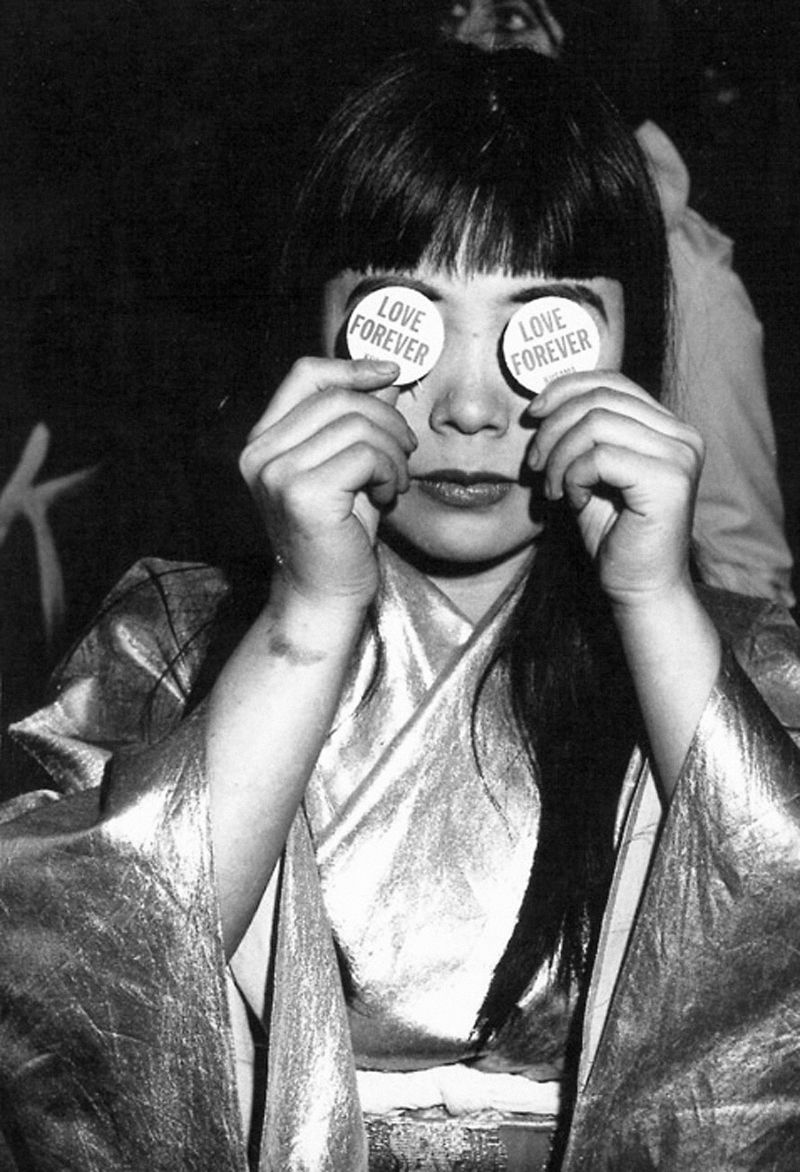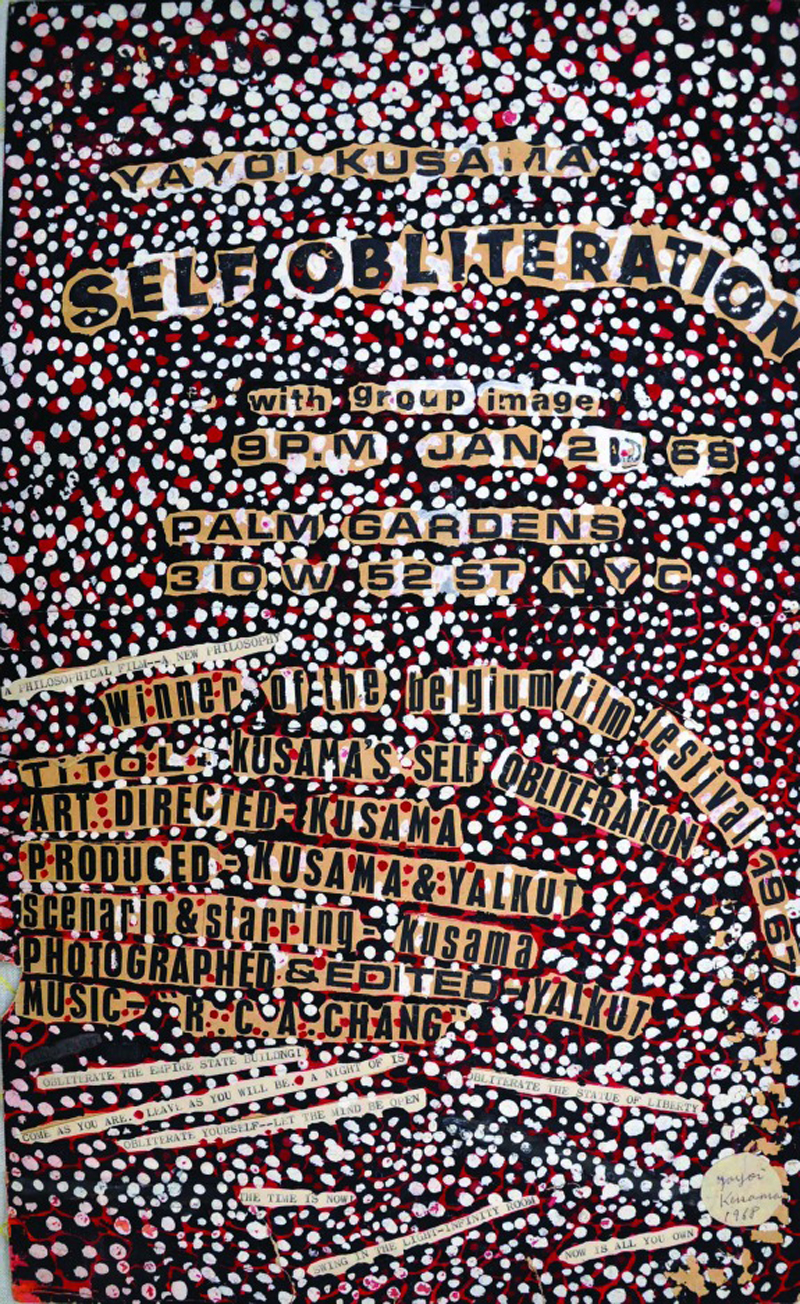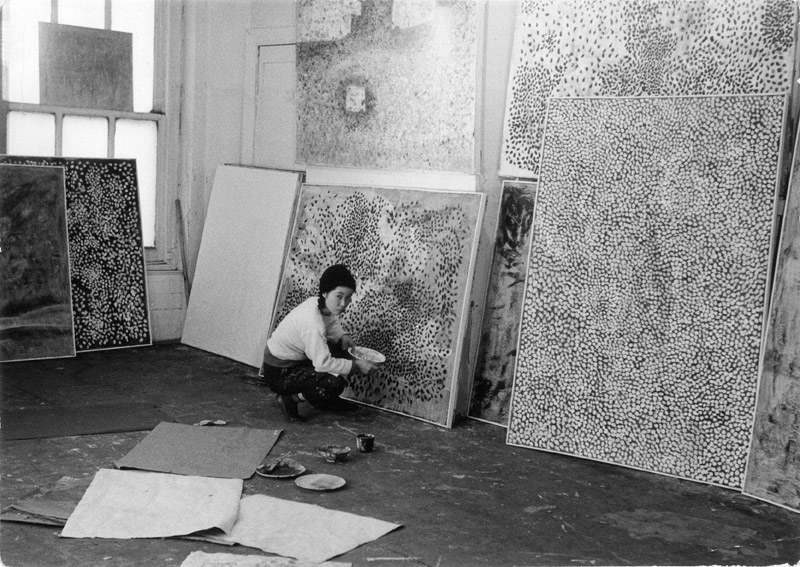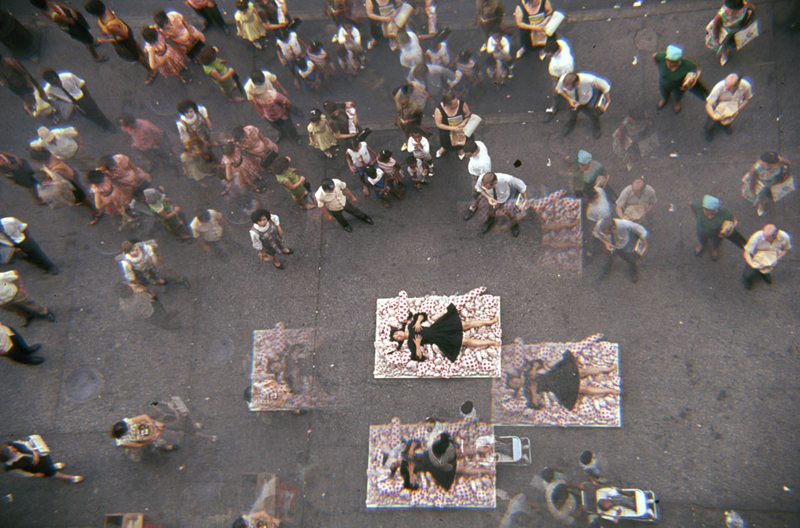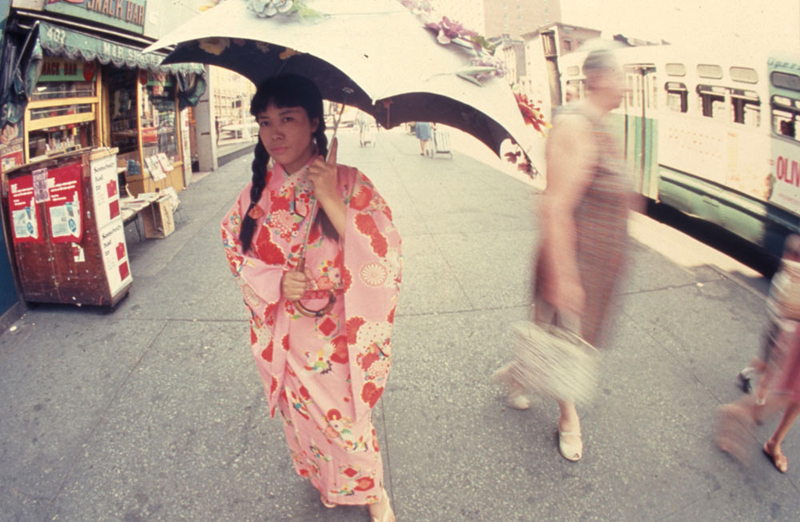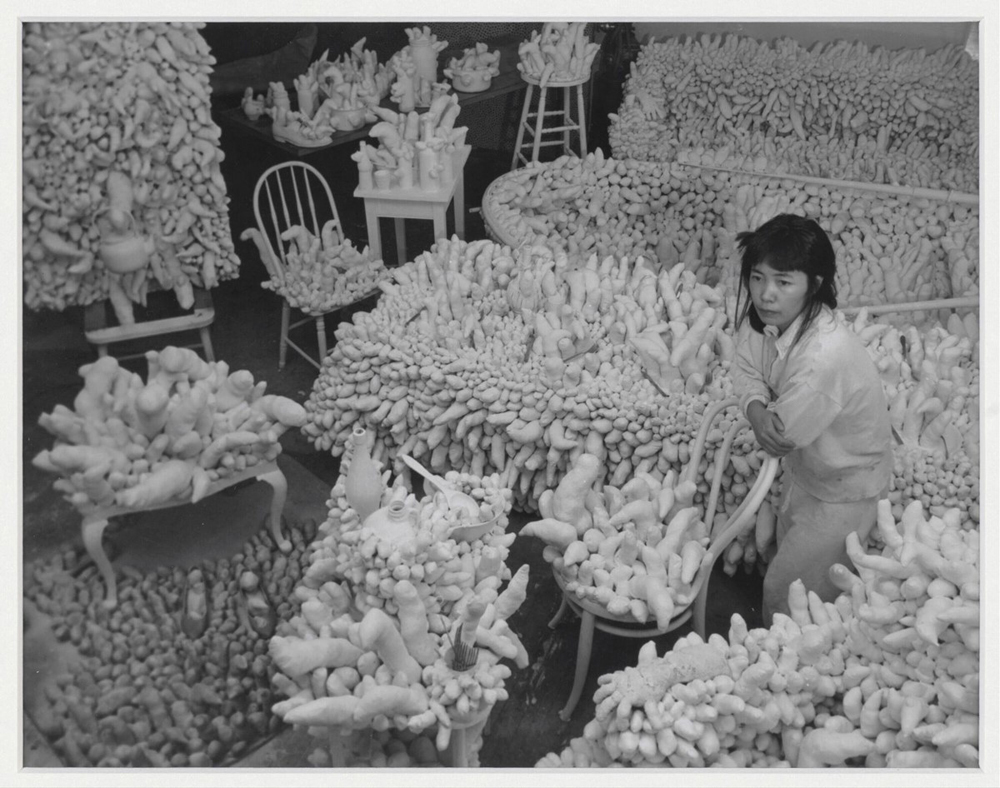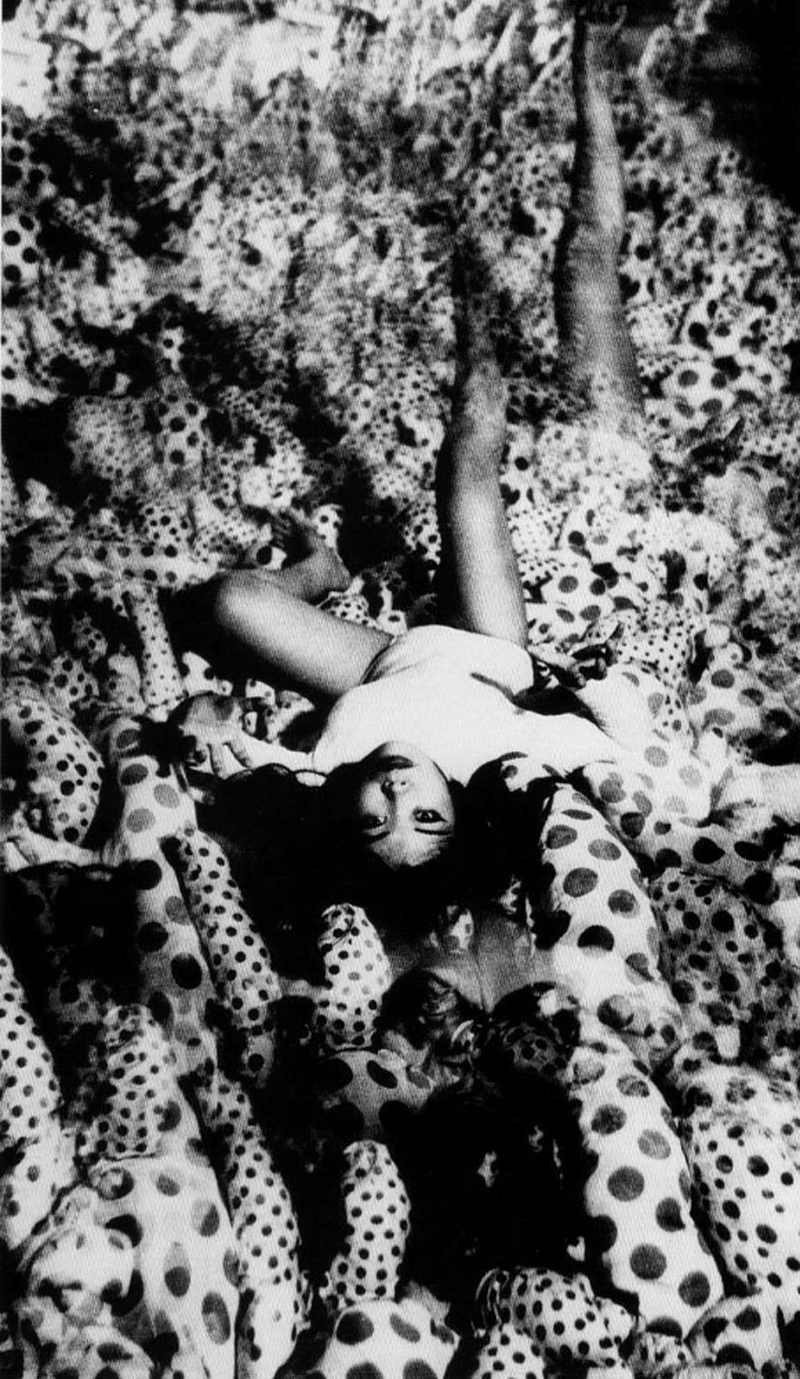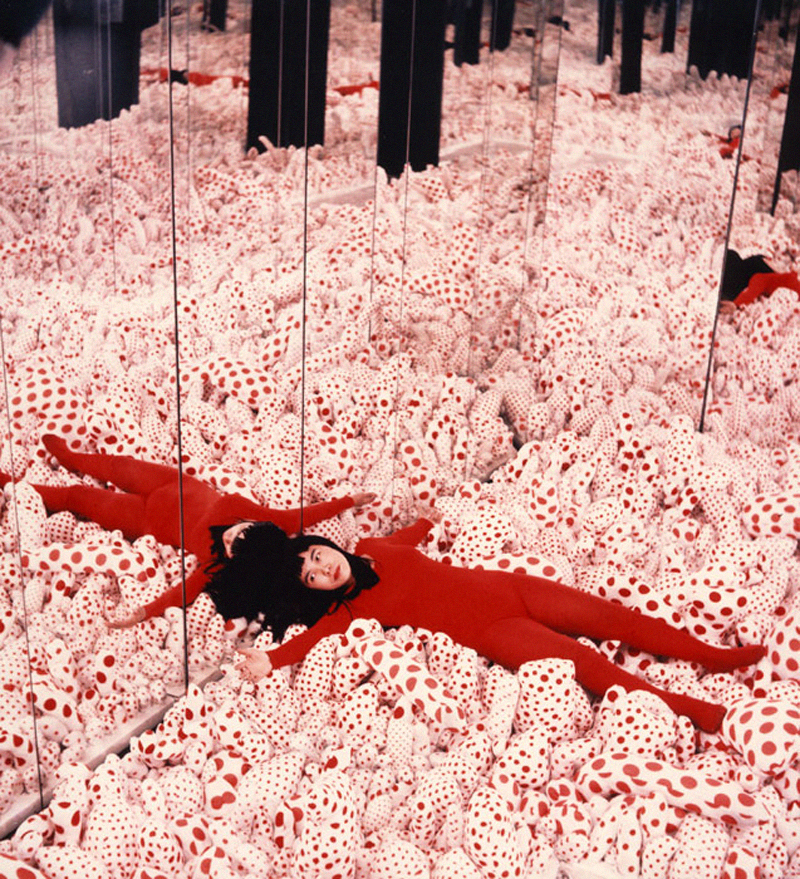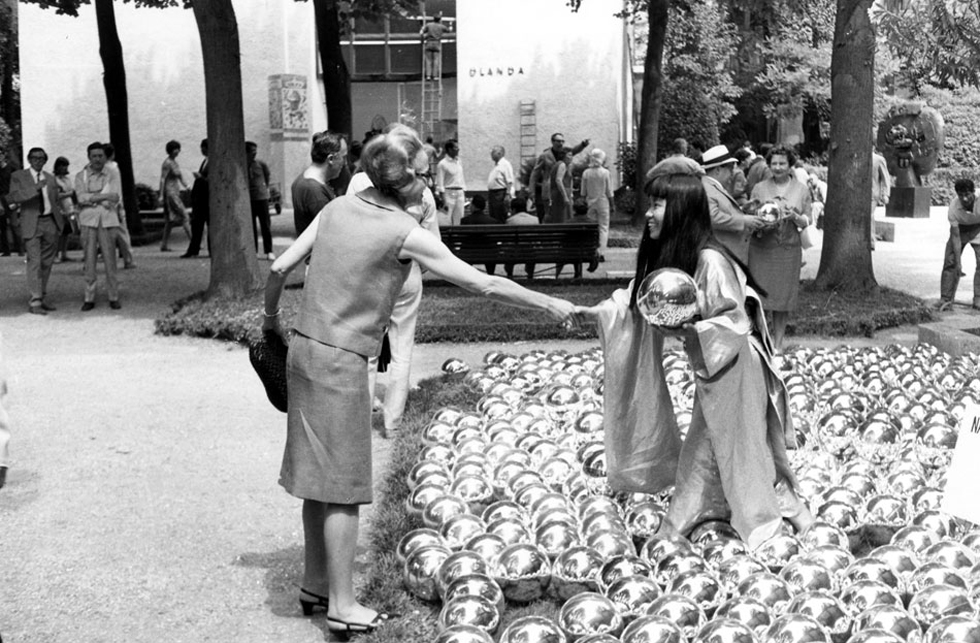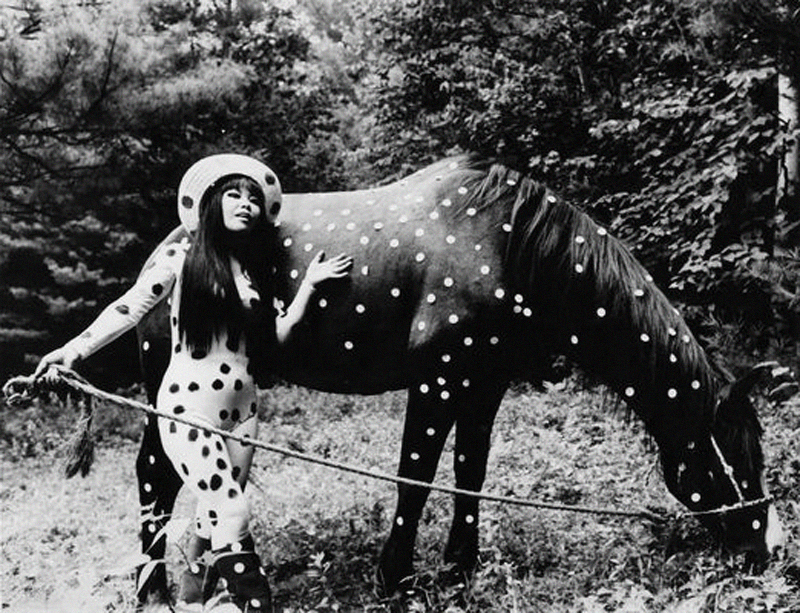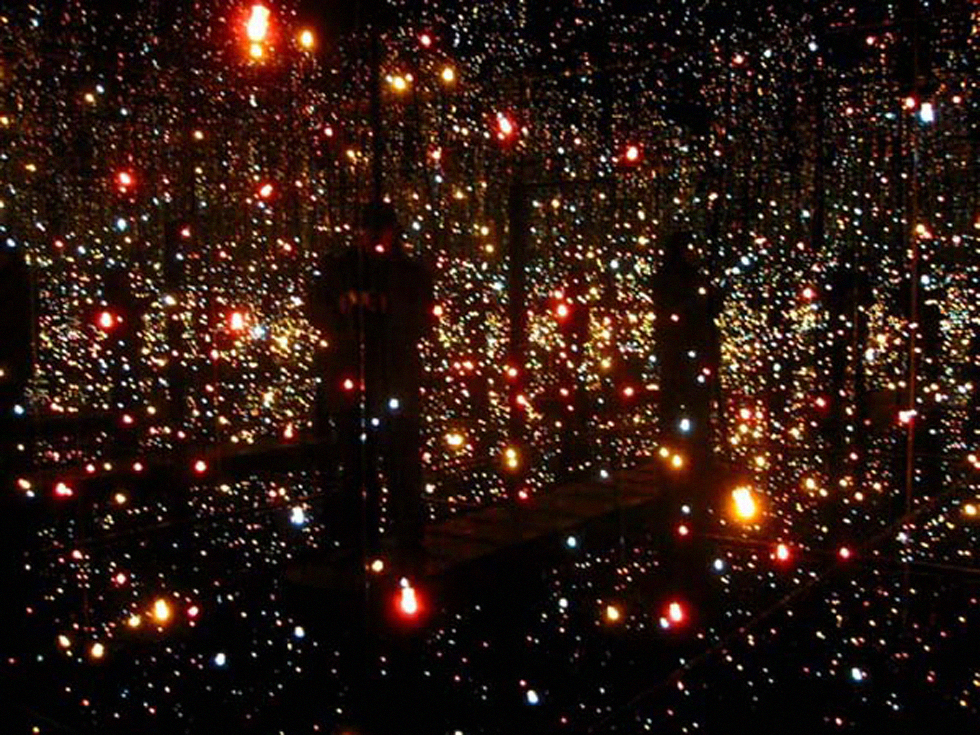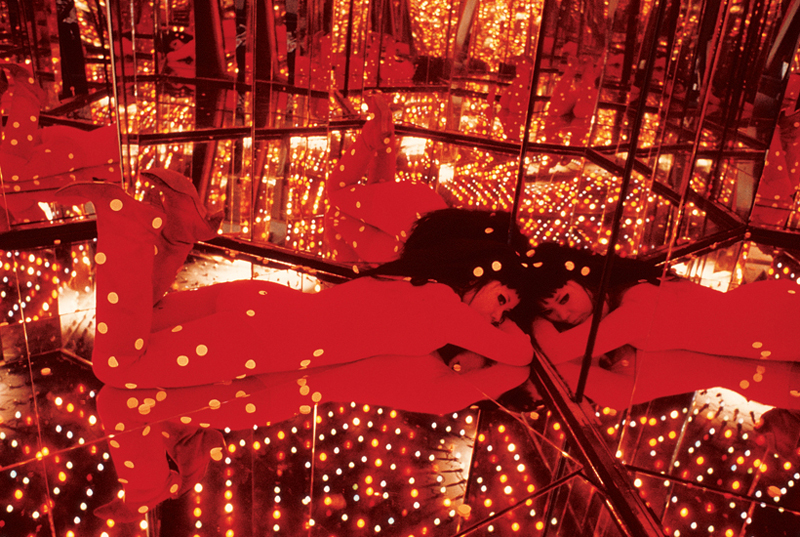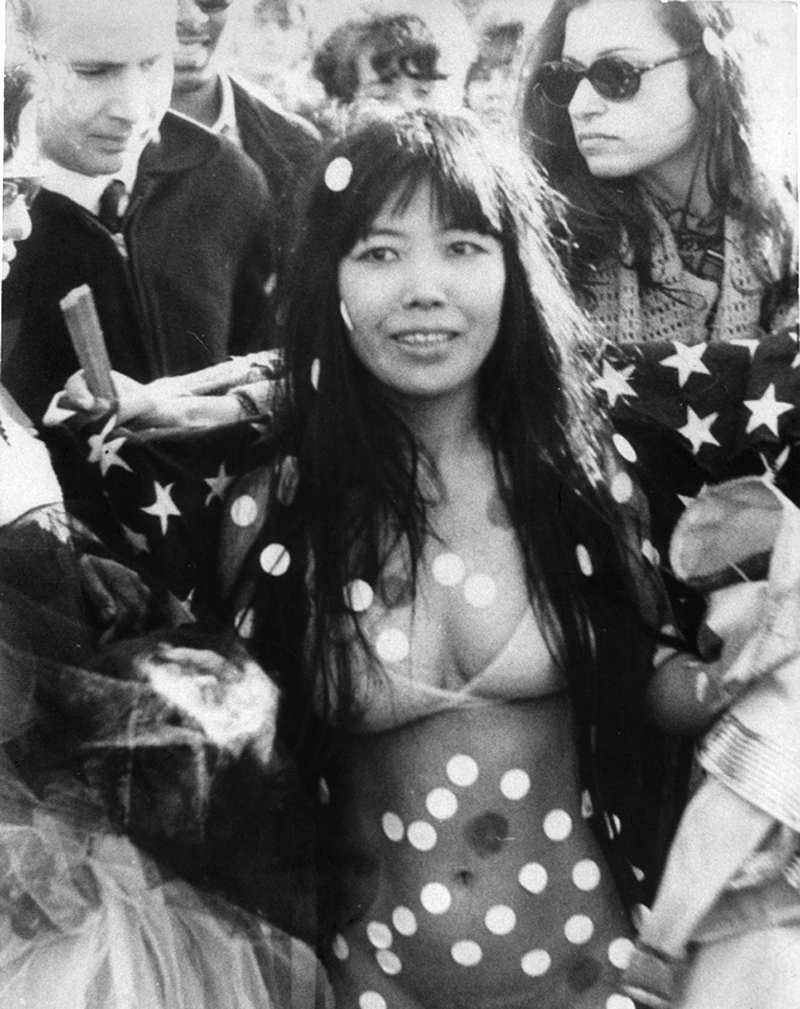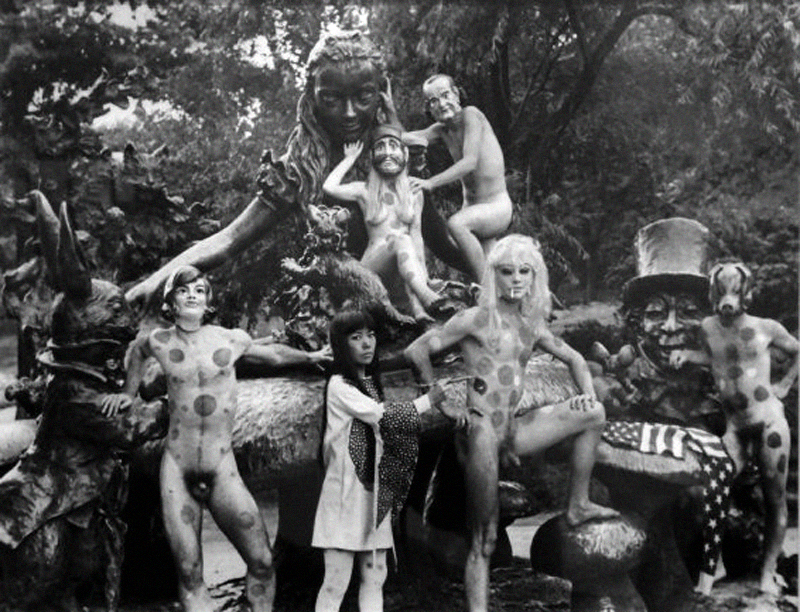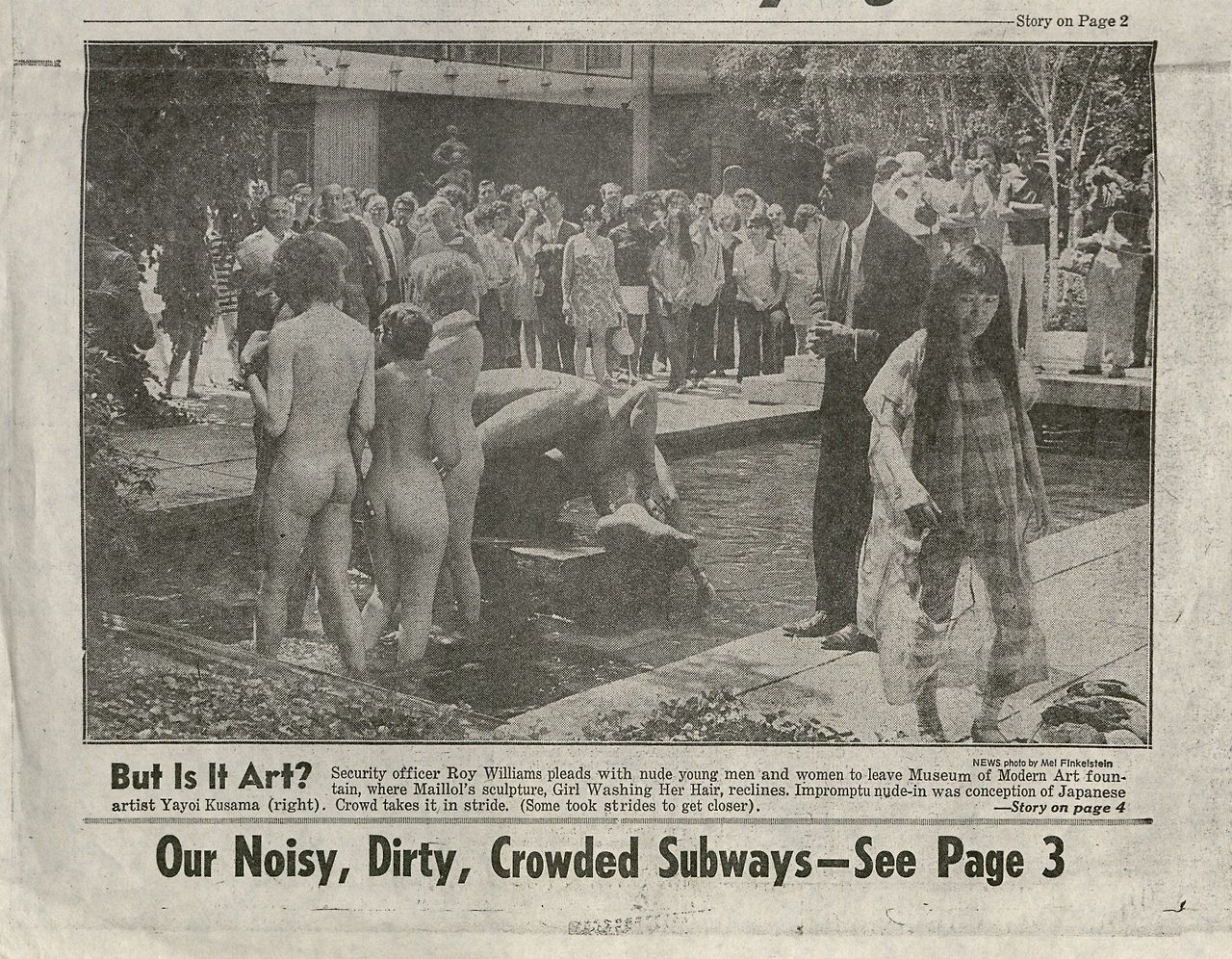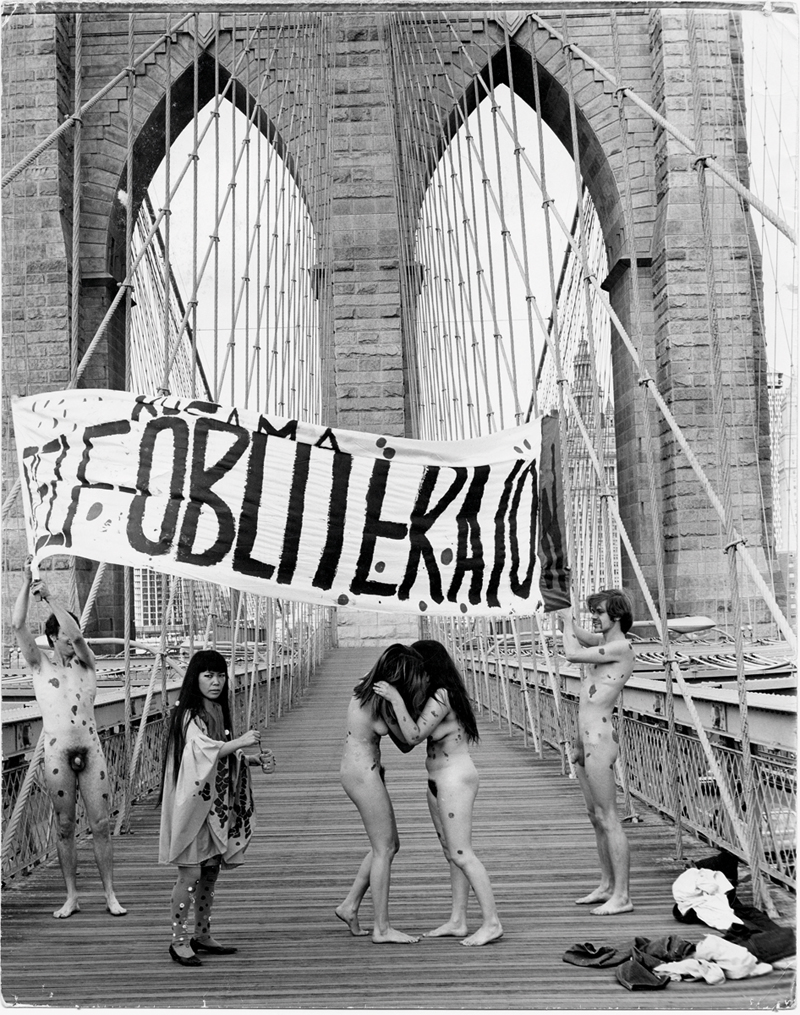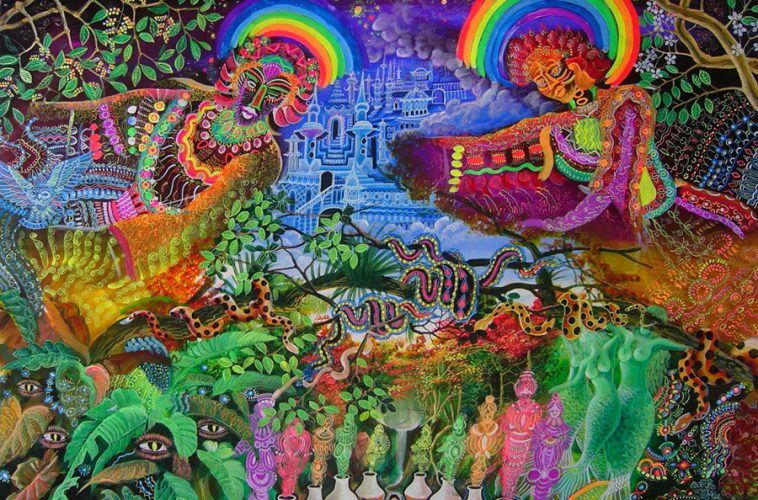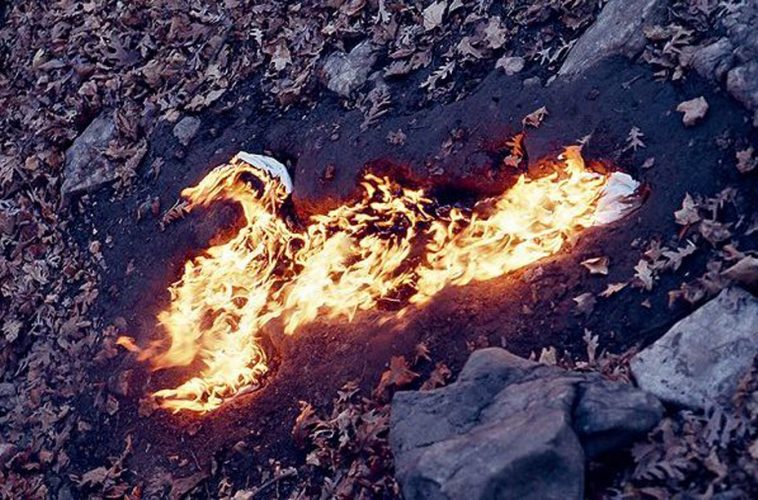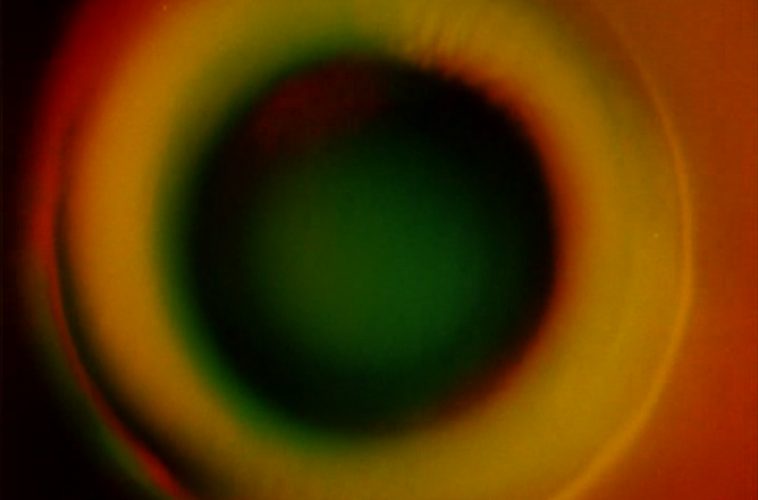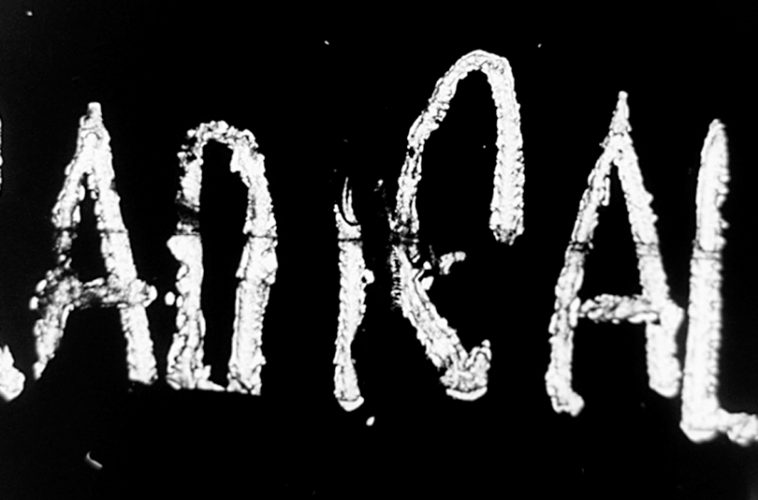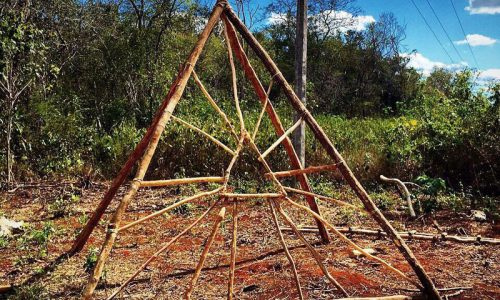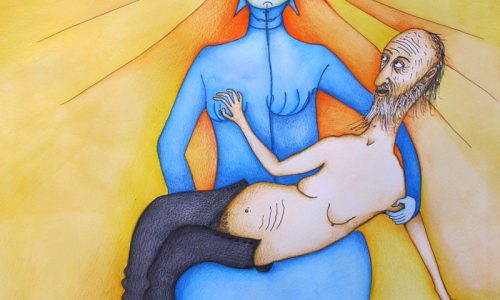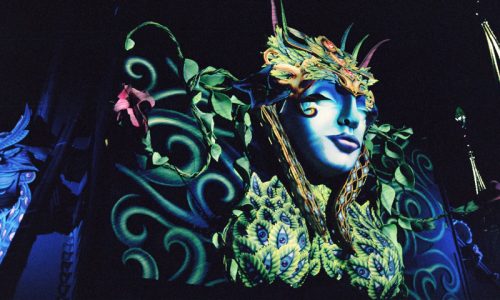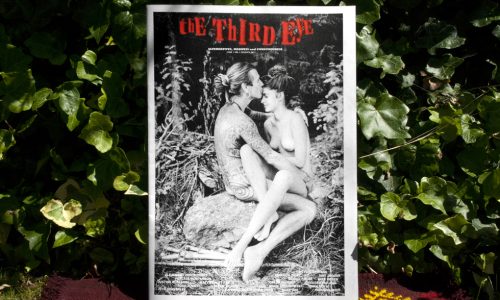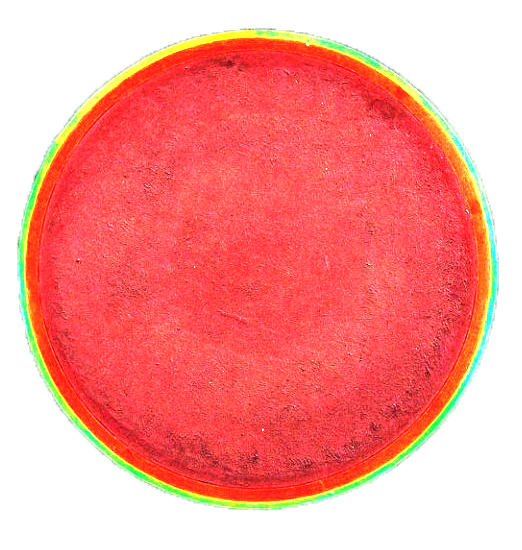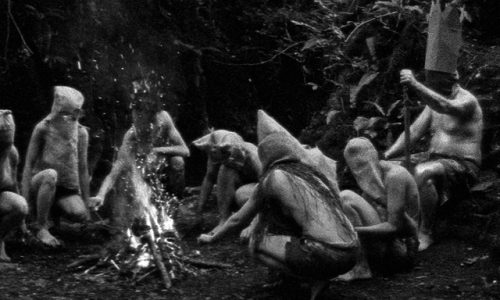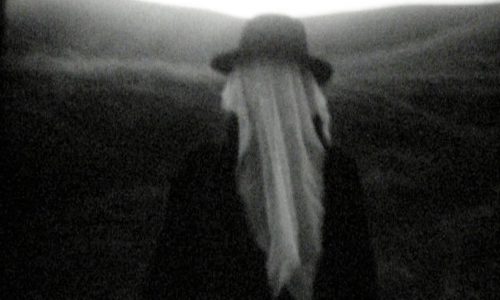THE INFINITY ROOMS
Avant-garde Japanese artist Yayoi Kusama's cosmic art at the Tate Modern's retrospective exhibition
3 Mar 2012
Polka dots are a way to infinity.
– Yayoi Kusama
Obsessed with repetition, perhaps most famously for polka dots, the legendary Japanese artist YAYOI KUSAMA’S art works are now on view at the Tate Modern in London. Now 82, Kusama has lived as a voluntary resident in a psychiatric hospital since 1977. Emerging from Tokyo’s contemporary art scene, Kusama burst onto New York’s counterculture scene in the 1950s. A Body Festival and naked Happenings (with plenty of polka dots) in Central Park were amongst some of her sexually-liberating creations. In 1967, Kusama launched the first issue of Kusama’s Orgy, an exciting but short-lived underground newspaper celebrating ‘NUDITY, LOVE, SEX & BEAUTY’.
All the meanwhile, Kusama was producing dizzying amounts of work, creating installations such as Accumulations, and transferring polka dots everywhere – even onto celluloid, in her 1968 psychedelic film, Kusama’s Self-Obliteration. Paintings such as Infinity nets, capture a hynotic movement of dots across the canvas, somehow echoing the colourful dotted Dreamtime paintings of Aboriginal art.
To this day, Kusama has never stopped making use of dots in her work. When asked about this, she has explained that each dot is a vortex into another universe.
Through painting, sculpture, film, installation and performance, Kusama’s visionary work has created an immersive and powerful experience of art exploring altered states of perception and reality. With her, we take a journey into the mystery of the psyche and the infinite – or as Kusama says, “Forget yourself. Become one with eternity. Become part of your environment.”
The Yayoi Kusama retrospective at the Tate Modern runs through June 5, 2012.
Text by Sophie Pinchetti
“A polka-dot has the form of the sun, which is a symbol of the energy of the whole world and our living life, and also the form of the moon, which is calm. Round, soft, colourful, senseless and unknowing. Polka-dots become movement…
Polka dots are a way to infinity.”
– Yayoi Kusama, in ‘Manhattan Suicide Addict’, 2005
“I will keep painting until I die.”
“I work as much as fifty to sixty hours at a stretch. I gradually feel myself under the spell of the accumulation and repetition in my nets which expand beyond myself, and over the limited space of canvas, covering the floor, desks and everywhere.”
― Extract from Yayoi Kusama: Early Drawings From The Collection Of Richard Castellane, 1961
“My art originates from hallucinations only I can see. I translate the hallucinations and obsessional images that plague me into sculptures and paintings. […] I create pieces even when I don’t see hallucinations, though.”
“I, Kusama, am the modern Alice in Wonderland.”
“If there’s a cat, I obliterate it by putting polka dot stickers on it. I obliterate a horse by putting polka dot stickers on it. And I obliterated myself by putting the same polka dot stickers on myself. […] Polka dots can’t stay alone. When we obliterate nature and our bodies with polka dots, we become part of the unity of our environments.”
“Forget yourself. Become one with eternity. Become part of your environment.”
“How deep was the mystery? Did infinite infinities exist beyond our universe? In exploring these questions, I wanted to examine the single dot that was my own life. One polka dot; a single particle among billions.”
“I wanted to start a revolution, using art to build the sort of society I envisioned.”
“More and more, I think about the role of the Arts, and as an artist, I think that it’s important that I share the Love and Peace.”

